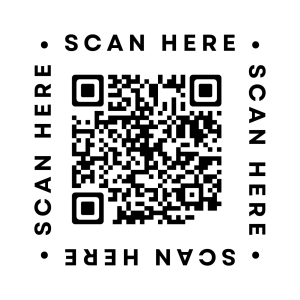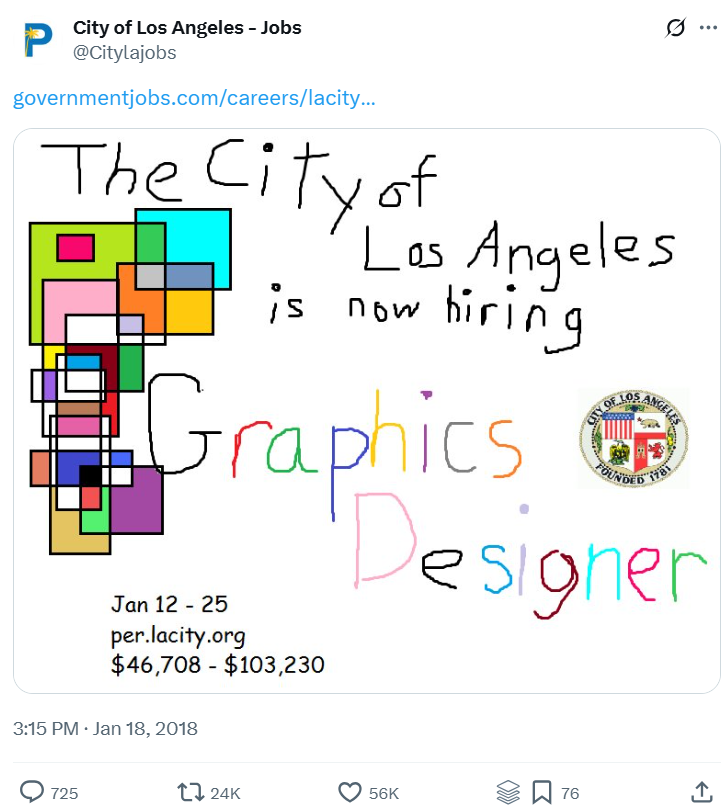Let’s be real for a second.
AI sourcing tools are everywhere. Everyone’s got a chrome extension, a chatbot, or some “next-gen” widget promising to dig up your next superstar. But here’s the thing they won’t tell you:
AI can only find what’s already out there.
So, what happens to the talent that isn’t shouting from rooftops online?
What about the folks who don’t live on LinkedIn, or who stashed their resume behind a job board firewall two years ago and ghosted the job hunt ever since?
If you’re only sourcing talent with tools that everyone else has access to… congratulations, you’re fishing in the same pond as every other recruiter with Wi-Fi.
That’s not a strategy. That’s a race to whoever has the faster internet.
Which brings us to why talent attraction actually matters and why it may be the only real differentiator left in recruiting.
Why Talent Attraction Is a Strategic Power Play (Not Just Fluff)
Let’s connect a few dots here:
- Competitive Advantage: If you want to win, you need players your rivals don’t have. Period. Attracting top talent isn’t just about hiring faster—it’s about hiring smarter. The best talent can rewrite your playbook, not just fill a seat.
- Skill Shortages Are Still a Thing: Especially in tech, healthcare, and any role requiring actual thinking. The competition is brutal. And if you’re a small or mid-sized company? You’re not just fighting Goliath you’re fighting Goliath with a slingshot and a job ad.
- Turnover Costs Are Insane: Replacing an employee can cost double their annual salary. Multiply that across multiple exits and you’ve got a budget leak bigger than your marketing spend. Want to plug it? Start by attracting the right people—not just warm bodies.
- Employee Expectations Have Evolved: Flexible schedules. Mental health days. Meaningful work. Candidates want to feel seen and valued, not just compensated. And if your employer brand doesn’t reflect that, you’re going to keep ghosting yourself.
- Growth Demands New Thinking: Whether it’s AI, new markets, or the latest “future of work” jargon—innovation depends on people. Not ping-pong tables. People. The right people.
- Culture Fit = Retention: Attracting people who actually belong improves engagement, loyalty, and team performance. It’s the difference between a revolving door and a core squad.
So, How Do You Attract Talent Others Can’t Find? Glad you asked.
Here’s a play straight out of the consumer marketing playbook—literally.
Instead of dropping a few million on a Super Bowl ad like everyone else flexing their budget, Skittles went rogue. They poured their money into a full-blown Broadway-style musical called “Broadway the Rainbow.” Yeah. A musical. About candy.
But get this, the whole production wasn’t just about sugary joy and unicorn vibes. Nah. The theme? A bold, colorful middle finger to the marketing industry itself. They used art to call out the very system they profit from. Meta much?
The main characters in the musical spin a cautionary tale on how advertising has completely ruined them and caused their lives to be in shambles. Despite the daring storyline and over-the-top visuals, this $200-a-ticket musical went viral and sold out in only a few days, not to mention garnering critical acclaim from multiple sources claiming it was the “most inventive ad of the decade”.
Here is a video discussing their strategy and showing scenes from the musical.
Taking a page from the Skittles playbook, why not flip the script entirely?
Instead of another bland hiring video or stock-photo career page, write a skit. A short, sharp, maybe even satirical sketch that shines a light on what’s broken in your industry. Be brutally honest about it. Then show how your company is doing things differently and how new employees will be part of that change.
Call it recruitment therapy with a sense of humor.
If that kind of bold thinking gets your gears turning, here’s another gem to chew on. This quote from All Business hits the nail square on the head…
In July 2010, Chicago’s Museum of Science and Industry, seeking to pep up its image and drive patronage, promised one person the chance to spend a “Month at the Museum”—as in, actually live there in a hotel-style room. The winner of the contest would then become a social media machine, Twittering, Facebooking, YouTubing, and Flickring about the experience, earning $10,000 for the effort.
The museum expected a few hundred entries, which included essays and videos. It received more than 1,500 from all over the world. The process of selecting the winner engaged more than 400 blogs, almost doubled the museum’s Facebook fan base, and drew in local TV and radio, along with ABC’s “Good Morning America” and other national news and entertainment shows.
Sound too expensive to pull off? Yeah, I figured you might say that.
So before your budget throws a tantrum, take a look at the image below.
What do you think—scrappy or smart?

Okay, you’re looking at it thinking, “It’s just a QR code. Big deal.”
Well… yeah.
It is a big deal.
Because when done right, that little black-and-white square becomes a backstage pass to your employer brand, not just a link to somewhere. Case in point, check out this quote from CNN.
“The app for Coinbase, a cryptocurrency exchange, briefly crashed Sunday after a bizarre Super Bowl ad sparked a surge in traffic.
The 60-second ad featured a floating and colorful QR code bouncing around the screen, similar to a bouncing DVD logo. The QR code directed people to a link offering $15 in Bitcoin to those who sign up for a Coinbase account before February 15. The ad proved so popular that the app crashed for about an hour.
Coinbase had more than 20 million hits on its landing page in one minute and the engagement that was six times higher than previous benchmarks, Surojit Chatterjee, chief product officer at Coinbase, wrote on Twitter. He said that was “historic and unprecedented.”
The app also skyrocketed in popularity, rising from 186th place to 2nd on Apple’s App Store, according to crypto news website the Block.”
Now imagine this…
For one day only, your company’s homepage is stripped down to nothing but a single, mysterious QR code.
No nav bar. No company blurb. Just that square.
Where does it lead? A secret landing page. Maybe even your Careers site—reimagined to spotlight your hardest-to-fill roles. Give it flair. Give it edge. Make it feel like an exclusive invite to the inner circle.
And depending on your web traffic or how you push it across socials?
It could catch fire.
While your competitors are busy begging for attention with “we’re hiring!” banners no one reads, you just turned a homepage into a conversation starter.
Into curiosity.
Into clicks that convert.
Sometimes, the loudest message…
is the one that whispers, “Wanna see something cool?”
And how much would that cost you?
Probably zero dollars.
Just a little nerve, a bit of creativity, and someone on your team who knows how to generate a QR code without breaking into a sweat.
Cheap. Clever. Effective.
And sticking with that theme, take a gander at this this gem from the City of Los Angeles.

If that job ad looks like something your kindergartener whipped up with a crayon and a juice box—good. That was the point.
Believe it or not, this scribbled masterpiece was used to promote a role with a potential six-figure salary.
Yep. Real money. Real job.
My Modern Met broke down the thinking behind it in a blog post, and here’s a quote that perfectly captures the brilliance behind the chaos…
The City of Los Angeles Personnel Department recently posted a job advertisement, for a new graphic designer. However, the ad wasn’t your average job listing: seemingly made in MS Paint, it features a pixelated copy-paste logo, “modernist cubes,” hand-drawn multi-colored fonts, and if that wasn’t bad enough, the particulars were written in Comic Sans.
Although it might look like a joke, the posting is in fact for a real, full-time job, and offers a very reasonable salary of up to $103,230 per year. The ideal candidate should have a Bachelor’s degree in Art, Graphic Design or Computer Graphics, or have completed a certificate program in the same fields. The post lasts for two years, and the successful applicant will be asked to carry out various graphic design projects including the creation of “displays, layout design for websites, brochures, descriptive charts, advertising or other publications for commercial or public use.”
I’ve seen this low-budget, no-budget strategy play out more than once and when it hits, it hits.
Here are a couple of examples that deserve a slow clap.
First up: Ryan Reynolds and Mint Mobile.
Instead of hiring a production crew the size of a Marvel set, Ryan kept it lo-fi. Cheap graphics. Straight-to-camera delivery. Deadpan humor.
The whole thing looked like it was edited on a secondhand laptop and that was the charm.
It felt human. Relatable. Shareable.
And spoiler: it worked.
And this next one? Hands down, my favorite recruitment video of all time.
No glossy drone shots. No overused buzzwords.
Just pure, unfiltered humor with a dash of “did-they-really-just-do-that?”
It’s the kind of video that doesn’t just attract applicants, it makes you want to work there just to meet the person who approved it.
Genius on a shoestring. That’s the magic.
Hungry for more zero-cost brilliance?
Click here and feast your eyes on these gems:
- Flickr recruited developers by hiding job ads in their own source code. Nerd bait, pure and simple.
- Snapchat used its own app to poach engineers straight from Uber and Airbnb (talk about using your product as a weapon).
And my personal favorite “wow?” One company (BTH) mailed disassembled phones to students they wanted to hire. If you put the phone together correctly, it booted up with a secret SMS message.
I mean—come on.
That’s not just recruiting.
That’s romance for engineers.
I could go on.
Like the time Facebook and Intuit made job offers to dozens of people—before telling them what the job even was.
Or how clandestine government agencies have been slipping recruiting hooks into video games for over a decade.
Or… okay, okay, I’m rambling now. (But admit it—you were into it.)
Now it’s your turn.
What are some low-budget, no-budget, or straight-up bizarre-but-brilliant recruiting tactics you’ve seen—or better yet, used?
Drop your ideas, tag @SourceCon, and let’s turn this into a rolling brainstorm.
Because if we’re all fishing in the same pond, you might as well be the one throwing dynamite.
